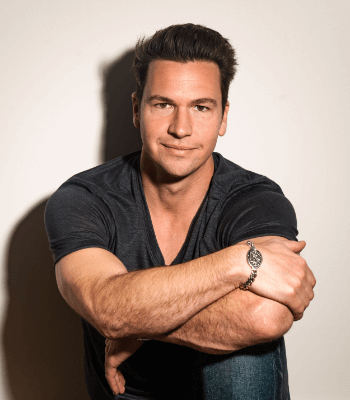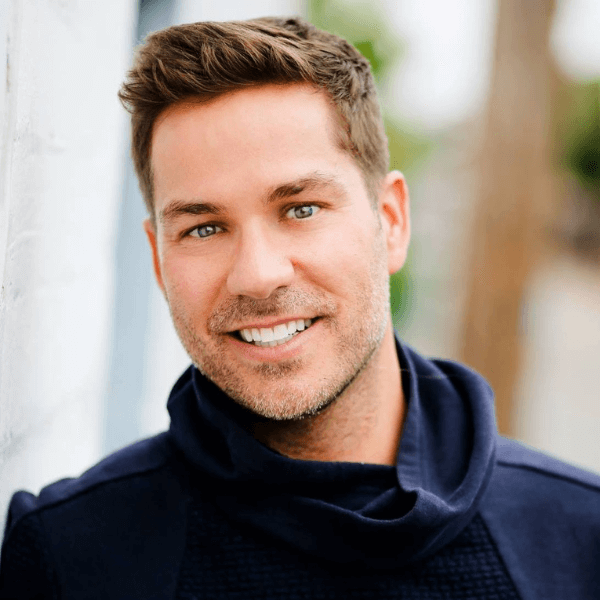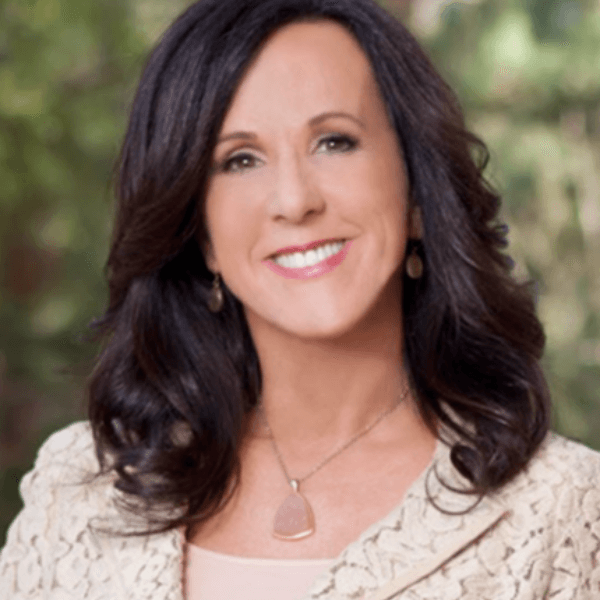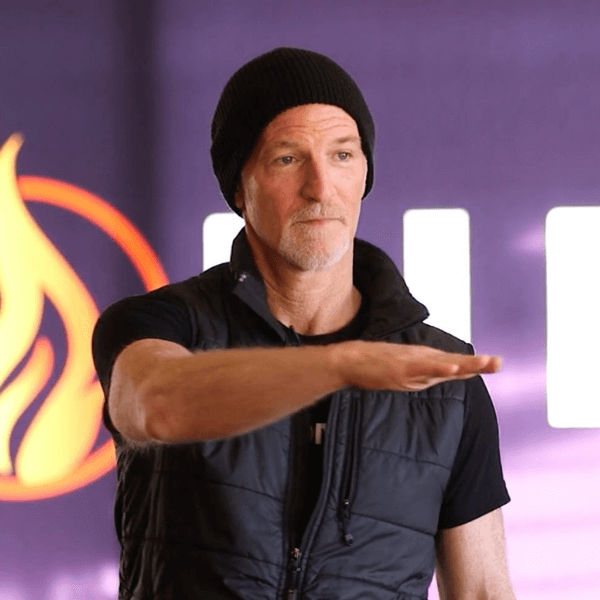My Digital Elevation Model for Getting Your Product out to People

One of the best techniques that I use to get my products out to an audience is the digital elevation model. As entrepreneurs, what we ultimately want are sales models and products that will create an impact on our clients — which is exactly what I achieve with my digital elevation model. Today I’ll walk you through the seven steps of my digital elevation model, so that you too can elevate your clients to consume more of your products and inspire a deeper transformation in them.
How to Create a Digital Elevation Model in 7 Steps
Step 1: Create Your Brand and Products

First, you have to create your own brand and the products under that brand. When I started my business, one of the first things that I wanted to do was create a high-end product and market it online. Many times, people who come into this business want to do the same thing. They see coaches like me launch online products worth thousands of dollars, and they think that’s the starting point.
While it is possible to start your business at that point, I think there’s a better way. To me, the best starting point is really defining what your brand is. If you focus on this, one of the first things you’ll do is create awareness for your brand. With the technology available today, you have the opportunity to reach people and create a global impact — and online marketing turns this opportunity into a reality.
For me, I want my flagship brand, Message To Millions, to be recognized all over the world. Consequently, some of my goals are to get this brand out to millions of people and to add 400,000 new people to my email list. To make these goals possible, I need to have an elevation model, which is what I’m sharing with you right now.
Read Also: How to Create a Product Empire | Marketing To Millions
Step 2: Create Traffic

To make brand awareness possible, you need people to see your brand on a regular basis, and you need to have traffic. Fortunately, one of the great things about using online marketing today is that you can utilize it to get traffic. Basically, this means you have leads coming into your business.
I use Facebook advertising to get tons of people see my products every day. Through this, I’ve been able to bring in 10,400 leads to my email list.
What you need to do now is to pick an advertising platform where you can get traffic to see your offers. After all, without traffic, or people, coming to see your offers, it will be difficult to get your products out to millions.
One of the big mistakes that coaches and speakers make in this business is settling for the minimum. For instance, coaches only want to have coaching clients, and speakers only want to speak in front of audiences. So they both focus on offline marketing.
Honestly, I fully support those goals. I think it’s a good model to bring in cash flow for the next 90 to 120 days of business. However, this is not a long-term sustainable model. Moreover, it’s not going to bring you droves of customers on autopilot every single day. To do that, you need to have traffic.
Read Also: Effective Social Media Strategies to Supercharge Your Coaching Business
How to Create Traffic
If you’re not using online marketing yet, you need to get in the game. One of the things you can start doing for your online marketing presence is creating videos. This is actually what I do for my brand. I put out weekly videos, which are each about 3 to 5 minutes long. In those videos, I discuss practical pointers that will help improve my clients’ business.
Part of getting people to see your brand is releasing good content. For my business, I release videos with good content. Then I take it one step further and boost them. Because people regularly see my brand online, they become familiar with it. Eventually, that familiarity will pull them in to make a buying decision with some of my products.
You can start in the same way. Build your brand by creating videos that will educate your clients. Then boost these videos (say, on Facebook) to get people to see your content and brand!
Another strategy aside from boosting content is paid advertising. I especially recommend this when you want to drive traffic to a specific offer you may have.
Step 3: Give Away a Free Gift

Once you’ve created your brand and built awareness around it, the third thing you should do is give away a free gift. There are usually two challenges that people in this business have. First, while they were able to create a product, they don’t have anything free to give away. Second, even though they have a free gift, it isn’t aligned with their brand or the elevation model.
The purpose of the free gift is to give potential customers a taste of your brand. It allows them to dip their toe in the water and decide if they like you and your products.
When you design your free gift and first paid offer, it’s very important that you create a link between them. This means that your first paid offer should complement your free gift.
The free gift also gives you an avenue to utilize an opt-in page. Here, people can give their email address in exchange for the free gift you are offering. This is a practice you should put into place immediately, because the moment they give you their email address, they take what I call a “more serious action.”
I call it this because it’s like they’re saying that they want to start building a connection with you. Once the exchange of free gift and email address takes place, it signifies the start of a serious relationship. While the potential customer may think they’re only dipping their toe in the water, I think of this as the start of a serious relationship. After all, once they opt-in for the free gift, they’re going to be redirected to what we call a sales page.
Step 4: Make a Low-Tier Offer

After a potential customer takes action and avails their free gift, the next thing to do is make an offer. This is what we call a low-tier offer. Its purpose is to get the potential customer to become a buyer.
Remember, you want to build a connection or relationship with them. That’s why step four is to make a low-tier offer that’s somewhere between $37 to $47. The pricing will really depend on you.
$37 to $47 is simply the pricing I use for my brand because I also take some costs into consideration. For example, these prices take into consideration the cost of getting a business lead on Facebook, which is around $3 to $4.
Low-Tier Offer: First Pricing
In pricing your low-tier offer, you have to consider the cost of getting your lead. While your offer should be low enough for somebody to buy it, it should also be high enough for you to make a profit.
Your low-tier offer is the first thing that potential customers will see. This is where both you and your customer are finally reaching the digital elevation model. The cool thing is, once somebody becomes your buyer, they will continue to buy.
Now, this isn’t to say that no one will buy your product if your pricing starts at thousands of dollars. However, my marketing structure is all about elevation. Remember, I’m teaching you how to get your product out there, how to grow your email list, and how to create a global impact. The digital elevation model is simply the most intelligent model to achieve those goals.
Read Also: Stand in Your Value | How to Price Your Service According to Its Worth
Low-Tier Offer: Second Pricing
After the $37 to $47 offer, the next offer you’ll make is another low-tier offer, priced at $97. Again, the specific price can vary depending on the way you price your products.
The digital elevation model I’m teaching you now is part of Product To Millions. You will notice that the things I will share with you related to this are primarily focused on low-tier offers. Truthfully, low-tier offers are the key to how I’ve grown my email list to 10,400 leads monthly. Without the low-tier products, I wouldn’t have been able to achieve this or any of my other successes.
Once you have people on your email list, it’s easier to market your products. That’s why you stand to lose if you don’t have the ability to get leads on your email list. Without an email list and without low-tier offers, you lose the ability to earn back the money you spent on advertising. Eventually, you won’t be able to sell your products anymore. You won’t get leads for your business, which will lead to stagnation. All of these facts together point to the fact that having low-tier offers is one of the most important things you can do for your business.
Consequently in designing your low-tier model, you should have two offers. The pricing is up to you. Some of my clients price their low-tier offers cheaper than $37 and $97, but this is because they are able to get leads for less than the $3 to $4 I pay.
Step 5: Make a Mid-Tier Offer
Enroll your clients by delivering incredible value – it’s that simple. pic.twitter.com/jf7VM4qPfD
— Ted McGrath (@ted_mcgrath) October 25, 2017
Next, we go to the mid-tier offer. This is a product that’s around $497. Usually, it’s also a membership program (subscription) that sells for $47 to $97 a month. The pricing is up to you — I am merely sharing my business practice.
Having a membership or subscription program is important because it brings in monthly recurring revenue. For me, after somebody buys my low-tier offer, I want to offer them a subscription. The reasons for this are two-fold: One, I want them to become a customer who is paying me every single month. Two, I also want them to be on this journey with me for as long as they want, so they can learn more from me and deepen their transformation.
The purpose of the mid-tier offer is to move the customer along to the next buying decision. Through it, they can deepen their relationship and connection with you, deepen their knowledge, and deepen the value they’re gaining. The more immersed they are in your community, the more they’re going to continue with you. With all this in mind, you can see why having a subscription program is an intelligent move.
Another component is the mid-tier product. The pricing on this product is again relative to how you price your other products and programs. While you get recurring revenue from subscriptions, the mid-tier product is a one-time payment. However, you can also offer the mid-tier product through installments, allowing you to gain a similar cash inflow to a subscription.
Overall, having a mid-tier offer is important in order for you to elevate your client to make deeper buying decisions and immerse them further in your community.
Step 6: Make a High-Tier Offer

Next in the digital elevation model is the high-tier offer. While all of these programs are online, that doesn’t mean you have to undersell them. For example, my flagship brand, which is the Message To Millions Online Coaching Program, sells for $1,997. While the pricing will ultimately depend on how you price your other products, for an online high-end offer, I wouldn’t go higher than $2,000. Find that sweet spot of not-too-high and not-too-low, and you’ll entice clients to make that leap with you to the next level.
What I’ve discovered over the last few years is that using the elevation model really works. Having low-tier and mid-tier offers allowed me to take my customers on a journey. Eventually, I was able to bring them to make the $1,997 purchase for my high-tier program.
This kind of program is more advanced and comprehensive. My own high-tier program has more content and modules. You can add more benefits to yours as well to really pack in the value.
The Digital Elevation Model
Great #mindset bears great #outcome! 💪🏽 Read on: https://t.co/5qE1QIh0GW. #TedMcGrath #success #entrepreneur #inspire #blessed pic.twitter.com/78WvKivQV1
— Ted McGrath (@ted_mcgrath) December 17, 2017
So you see? Through this marketing structure, we were able to elevate customers from the free offer, all the way up to the highest tier. This is the model I use for my business, and I want to encourage you to do the same.
Now, this may sound like a lot of work, but my tip for you is to focus on the low tier. After all, that’s what’s going to help you grow your email list. From there, you will be able to get buyers whom you can elevate to your higher-end programs.
Step 7: Deepen the Transformation

Now if you’re a coach or speaker, I’m not telling you to stop your offline marketing. Instead, what I’m saying is that applying the digital elevation model primes people to buy the highest-tier programs that you have.
The seventh step is actually getting the customers into your seminars or coaching programs. Bear in mind, the goal is always to encourage your clients to have a deeper transformation. With the digital elevation model, you were able to take them on a journey where you elevated their buying decisions. However, an even deeper transformation can only be achieved once they actually become part of your seminars and coaching programs.
Now, what I want you to do is to start thinking about what your brand will be. Then, figure out the low-tier products you will offer. Remember, the digital elevation model is built around this, and the elevation kicks off from here. If you need to, review the steps again. Make sure to apply each one carefully so you can get your products out and start making an impact on millions!
What other results do you want to gain from applying the digital elevation model? Share your thoughts with me in the comments below!
Up Next: What Is Marketing Funnel Automation? (Spoiler: It’s Customers on Autopilot!)
ABOUT THE AUTHOR





